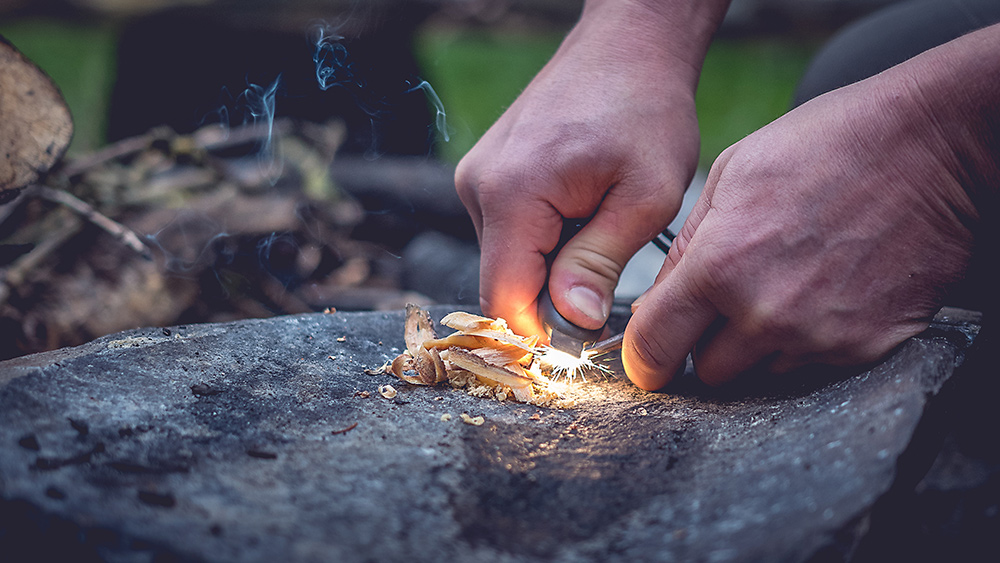
Preppers often talk about bug-out bags, or BOBs, but did you know that there are six different kinds of survival bags for various SHTF scenarios? (h/t ThePrepperJournal.com.)
When preparing these survival bags, remember that they're mostly used for personal emergencies and they're designed to effectively signal for help. Since you're going to focus on signaling for help, your priorities are preventing severe bleeding and setting up some shelter. Next are water and medical supplies, with food in last place.
- Every Day Carry kit (EDC kit) – As the name implies, an Every Day Carry kit is something you bring with you each time you leave the house. It usually includes items like your smartphone, a pen and notepad, and a multi-purpose tool.
- Get Home Bag (GHB) – When you're anywhere that's a good distance away from your home, such as at work, you may need a Get Home Bag. A GHB contains items that can increase your chances of getting home safely, and the best place to put this bag is in your car for easy access. A GHB may contain a spare change of clothing and shoes that can let you walk home in various severe conditions and some Personal Protection Gear (PPG) like an air filtration mask and other weather specific gear. Ideally, a GHB must contain info that can help you get home, such as several routes you can take to get home or dangerous areas to avoid and a survival kit.
- Bug-out Bag (BOB) – BOBs are designed to help you leave a dangerous place so you can get to a safer destination. A BOB often includes food so you can keep up your energy while traveling to your bug-out location. It will also include a first aid kit, weather-appropriate clothing, materials that you can build a shelter with, and water containers. (Related: What’s in YOUR bug out bag? 10 must-have multipurpose survival tools.)
- Get Out of Dodge Bag (GOOD bag) -–A Get Out of Dodge bag makes it easier to flee an area that's been hit by a disaster. The contents of a GOOD bag prioritize short-term movement, self-defense, and long-term access to water and food from other areas. A GOOD bag is a kind of BOB without a set schedule or destination.
- I’m Never Coming Home bag (INCH bag) – An "I'm Never Coming Home" bag doesn't have that many practical uses unless you no longer have a home to return to or you're on the run from the government.
- Survival kit – A survival kit must fit in your pocket if you're staying around town, in a belt pack if you're close to civilization, or in your backpack if you are venturing out into the wilds. Aside from a light source and materials to signal for help, it must include a medical kit to stop severe bleeding, several fire starters, and a basic sewing kit (substitute some dental floss if you don't have any thread). If there's enough space in your bag, add a Mylar/"space blanket" and other materials you can use to build a shelter.
Deciding what kind of bag to use
There are three components for these survival bags:
- The kind of bag you're getting;
- The contents of the bag; and
- The survival skills that can help you make the most out of the contents of the bag.
Consider durability, long-term comfort, size, and weight when choosing a bag. Additionally, get a bag that's low-key so it doesn't attract the attention of possible attackers.
When packing a survival bag, take into account the size of the bag and how much it'll weigh. Practice walking around with your survival bags in your spare time. Make sure that you can at least run or sprint while carrying your bag so you won't become a liability to your group.
Get a comfortable bag when packing a survival bag and keep as much of the weight by your hips so you can walk with ease. Don't get a pack with an external frame because it can get caught on branches.
When it comes to durability, consider getting a canvas, leather, or nylon bag. A mid-weight nylon bag is a good option so it's not too heavy when carried for a long time. If your bag isn't waterproof or highly water resistant, try to get a waterproof cover. Organize everything in your bag so you can grab whatever you need when you need it.
With these six types of survival bags in mind, you'll have an easier time preparing for any survival scenario that might come your way.
You can learn more about these survival bags and what kind of gear to include in each one at Gear.news.
Sources include:
Please contact us for more information.





















